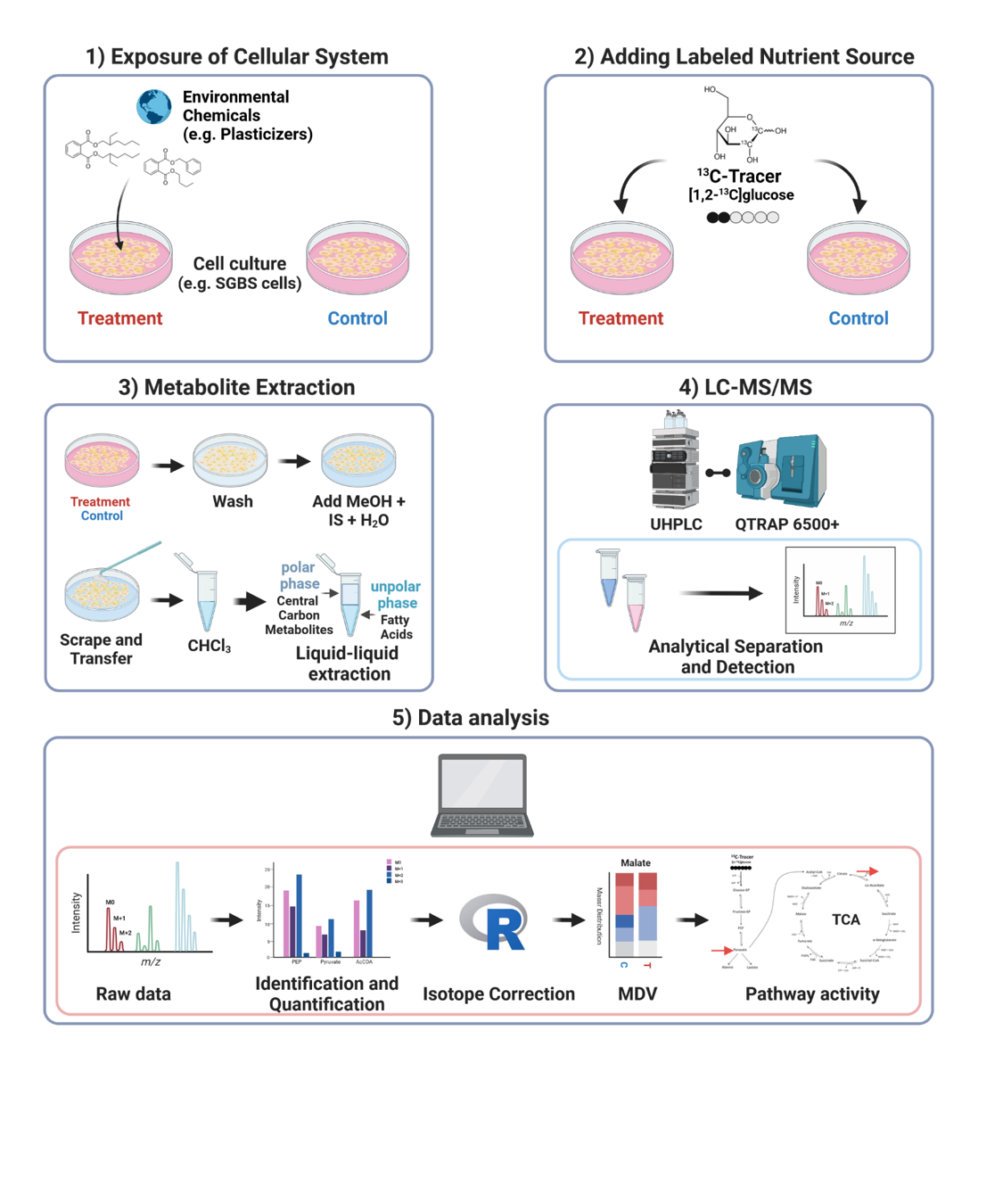Studying metabolic fluxes using isotope-labeled substances

Metabolic pathways and transformation kinetics can be changed or disturbed by the exposure to toxins and ubiquitous present chemicals. Isotopic tracer analysis is a technique that allows an isotopic metabolic substrate to be followed downstream through the metabolism by introduction of a labeled tracer molecule into a cell-based system. Upon cellular uptake and metabolism of the tracer molecule, the 13C is incorporated into the metabolites along the metabolic pathways that are using the labeled carbon as a nutrient source. Subsequent analysis of the amount of incorporation and labeling pattern by mass spectrometry provides information, which metabolic pathways are utilized. In combination with time series measurements, estimation of the kinetics of metabolic transformation are possible. This allows us to study the diverse effects of environmental factors (e.g. plasticizers) on the metabolic flux dynamics. Commonly used for tracing are labelled carbon (13C), nitrogen (15C) or hydrogen (2H) sources, and also a combination of multiple tracers can be introduced. Our working group mainly focuses on the measurement of 13C isotopic tracer analysis with labeled carbon sources e.g. [1,2-13C]-glucose. For analyzing the labeling patterns of the central carbon metabolism, we commonly use a targeted scheduled MRM method with around 300 precursor-fragment pairs on a QTRAP 6500+ system (Sciex). In the near future methods will be transferred also to our high-resolution mass spectrometers.
